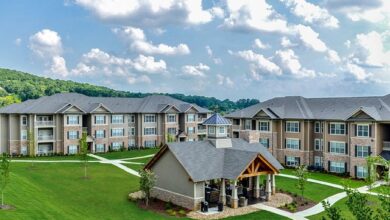Homeowners Insurance for High-Risk Areas in the UK: What You Need to Know

Owning a home is one of the most significant investments you’ll make in your lifetime. However, if your property is located in a high-risk area—whether due to flooding, subsidence, or other natural hazards—securing adequate homeowners insurance can be challenging. In the UK, where weather patterns and environmental risks are increasingly unpredictable, understanding how to navigate homeowners insurance in high-risk areas is crucial. This guide will walk you through everything you need to know about protecting your home, even in the face of elevated risks.
What Makes an Area “High-Risk”?
A high-risk area is typically defined as a location that is prone to specific perils or hazards that could cause damage to your property. In the UK, some of the most common risks include:
- Flooding: The UK is particularly vulnerable to flooding due to its geography and climate. Coastal areas, river valleys, and urban regions with poor drainage systems are especially at risk.
- Subsidence: This occurs when the ground beneath your home shifts or sinks, causing structural damage. Clay-heavy soils, which are common in parts of the UK, are particularly susceptible to subsidence during dry spells.
- Storms and Wind Damage: Severe storms, including those with high winds and heavy rainfall, can cause significant damage to roofs, windows, and other parts of your home.
- Fire Hazards: Areas with dense vegetation or proximity to industrial zones may face higher fire risks.
- Crime Rates: While not a natural hazard, high crime rates in certain areas can impact the cost and availability of insurance, particularly for theft and vandalism coverage.
Understanding the specific risks associated with your location is the first step in securing appropriate homeowners insurance.
Types of Homeowners Insurance Coverage
Before diving into the challenges of insuring homes in high-risk areas, it’s important to understand the different types of coverage available:
1. Buildings Insurance
This covers the structure of your home, including walls, roof, floors, and permanent fixtures like plumbing and electrical systems. It’s essential for repairing or rebuilding your property after damage.
2. Contents Insurance
This protects the belongings inside your home, such as furniture, electronics, and personal items. Contents insurance is separate from buildings insurance but can often be bundled together.
3. Combined Policies
Many insurers offer combined policies that cover both buildings and contents under a single plan, simplifying the process and sometimes offering discounts.
Challenges of Insuring Homes in High-Risk Areas
If your home is located in a high-risk area, you may encounter several challenges when trying to secure homeowners insurance:
- Higher Premiums: Insurers charge higher premiums for properties in high-risk areas to offset the increased likelihood of claims.
- Exclusions: Some insurers may exclude coverage for specific risks, such as flood damage or subsidence, leaving you unprotected against these perils.
- Limited Options: Not all insurers are willing to provide coverage in high-risk areas, reducing your choices and making it harder to find competitive rates.
- Flood Re Scheme: While the government-backed Flood Re scheme helps make flood insurance more affordable for many homeowners, not all properties qualify, particularly newer builds or those in very high-risk flood zones.
How to Secure Homeowners Insurance in High-Risk Areas
Despite the challenges, there are steps you can take to secure affordable and comprehensive homeowners insurance:
1. Assess Your Risks
Start by identifying the specific risks associated with your property. Use tools like the Environment Agency’s flood maps or consult local authorities to understand the likelihood of flooding, subsidence, or other hazards.
2. Mitigate Risks
Taking proactive measures to reduce risks can lower your premiums and improve your chances of securing coverage:
- For Flooding: Install flood defenses like barriers, non-return valves on drains, and water-resistant materials.
- For Subsidence: Maintain trees and shrubs near your property to prevent root-related soil movement.
- For Storms: Reinforce your roof, secure loose tiles, and trim overhanging branches.
3. Explore Specialist Insurers
Some insurers specialize in covering high-risk properties and may offer more flexible terms than mainstream providers. These companies often have experience dealing with complex risks and can tailor policies to your needs.
4. Leverage Government Schemes
The Flood Re scheme is designed to help homeowners in flood-prone areas access affordable insurance. If your property qualifies, your insurer will pass the flood risk portion of your policy to Flood Re, which subsidizes the cost.
5. Increase Your Excess
Opting for a higher voluntary excess (the amount you pay toward a claim) can reduce your premium. Just ensure you can afford the excess if you need to make a claim.
6. Bundle Policies
Combining buildings and contents insurance with the same provider can often result in discounts. Similarly, bundling home insurance with other products, like car insurance, may also save you money.
7. Shop Around
Don’t settle for the first quote you receive. Use comparison websites, speak to brokers, and contact multiple insurers to find the best deal. Be sure to compare not just the price but also the level of coverage and exclusions.
What to Look for in a Policy
When evaluating homeowners insurance policies for high-risk areas, keep the following factors in mind:
- Coverage Limits: Ensure the policy provides sufficient coverage to rebuild your home or replace your belongings in the event of a total loss.
- Exclusions: Carefully review what is excluded from the policy. For example, some policies may not cover flood damage unless you’re part of the Flood Re scheme.
- Claims Process: Research the insurer’s reputation for handling claims. A smooth and efficient claims process can make a big difference during stressful times.
- Additional Features: Look for extras like alternative accommodation coverage, which pays for temporary housing if your home becomes uninhabitable.
Tips for Reducing Your Premiums
Securing affordable homeowners insurance in a high-risk area requires creativity and diligence. Here are some tips to help you lower your costs:
- Improve Security: Installing alarms, CCTV cameras, and locks can reduce the risk of theft and vandalism, potentially lowering your premium.
- Maintain Your Property: Regular maintenance, such as fixing leaks, repairing roof damage, and addressing drainage issues, can reduce the likelihood of claims.
- Pay Annually: If possible, pay your premium annually rather than monthly. Many insurers charge extra for monthly payments.
- Build a No-Claims Discount: Avoid making small claims whenever possible to build up a no-claims bonus, which can significantly reduce future premiums.
- Consider Excess Protection: Some insurers offer “excess protection” policies that cover your excess in the event of a claim, allowing you to opt for a higher excess without worrying about the out-of-pocket cost.




